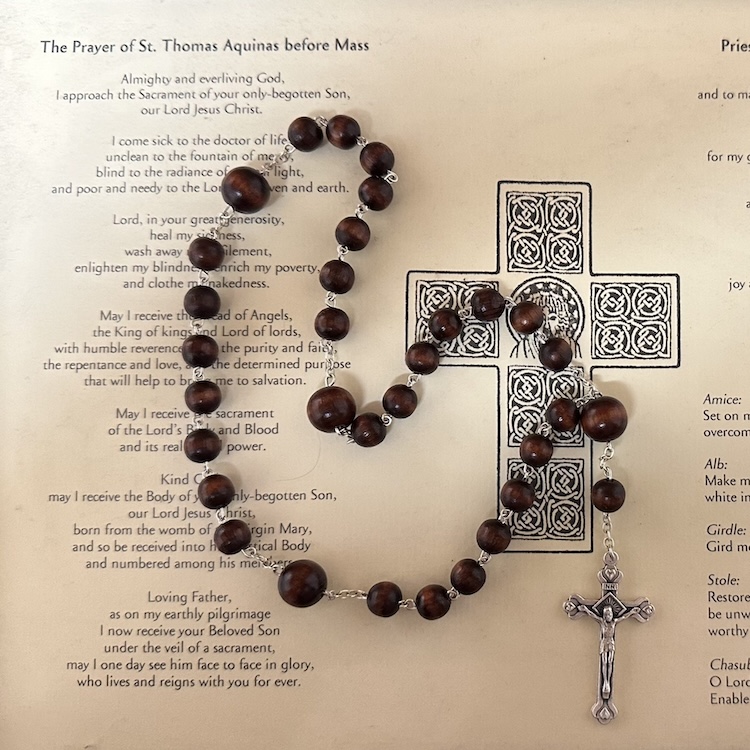Welcome, all seekers! …
I offer you a warm and inclusive welcome from an American southerner, serving as a priest in rural Wales. Every week we post new prayers for the Anglican rosary in English and Spanish based on the themes of the liturgical week from the Revised Common Lectionary. If you’re already familiar with praying in this style, you’ll find the latest postings to the left on the desktop site or further below on the mobile version. Otherwise, you can click here to learn more about praying with Anglican beads. Or, if you’re the type who likes to have a physical book of prayers in your hand, you can buy one here (US, English) or here (UK, English) or here (US, Spanish).

“But wait!”, I hear you say. “I thought rosaries were just for Catholics!” Well … no. Not really. It’s true enough that prayer with beads hasn’t formed a very visible part of the Anglican spiritual tradition; but that doesn’t mean it’s off-limits, nor that it’s not a legitmate part of our history. Nor does it mean that there haven’t been thousands and thousands of Anglicans quietly praying both the traditional Roman Catholic rosary and/or this version for many generations.
Something Familiar, Something Fresh, Something for the Spirit
Something Familiar
Although the Anglican version of the rosary came about early in the 20th century, its roots go back much further: to the traditional catholic rosary, and also to the orthodox prayer rope. Prayer with beads, the repetition of the words with the aim of hearing God in the silences, is a venerable tradition in the christian faith. If you’re used to praying with beads in general, the experience with these will feel very familiar and comfortable; the principle is the same. On the other hand, if you have no experience with this type of prayer, I assure you that the practice is simple and easy to learn.

Something Fresh

What’s different about this type of rosary is that the prayers are more flexible. Of course, it’s possible to pray the Hail Mary as in the Catholic tradition, or the Jesus Prayer as in the Orthodox; both are options. But in addition, or instead, you can also use well-known lines from the Book of Common Prayer (e.g., “Lord, open thou our lips, and our mouths shall show forth thy praise”), of belovèd hymns (“Teach us to know the Father, Son, and thee, Holy Ghost, to be but one”), the psalms and the scriptures (“Come, let us sing unto the Lord, let us shout with joy to the rock of our salvation!”), or famous prayers of the saints (“Lord, make me a channel of your peace; where there is hatred let me sow your love”). The possibilities are endless … but if you don’t know where to begin, we can pray together.
Something for the Spirit

Praying with beads is, ultimately, a type of meditation. When we pray the words in repetition, we’re presented with an opportunity to reflect upon or sit with our prayers with a growing depth. We’re offered the possibility of hearing something new in the prayers every time we pray them. And through silences between the prayers, we can find ourselves in tranquility and listen for the still, small voice of God. The first step in praying this way is simply to find a quiet space (if that’s possible in this noisy life!); take a few moments of stillness, ask God to join you, that his Spirit will guide you. And then we begin praying like this …



